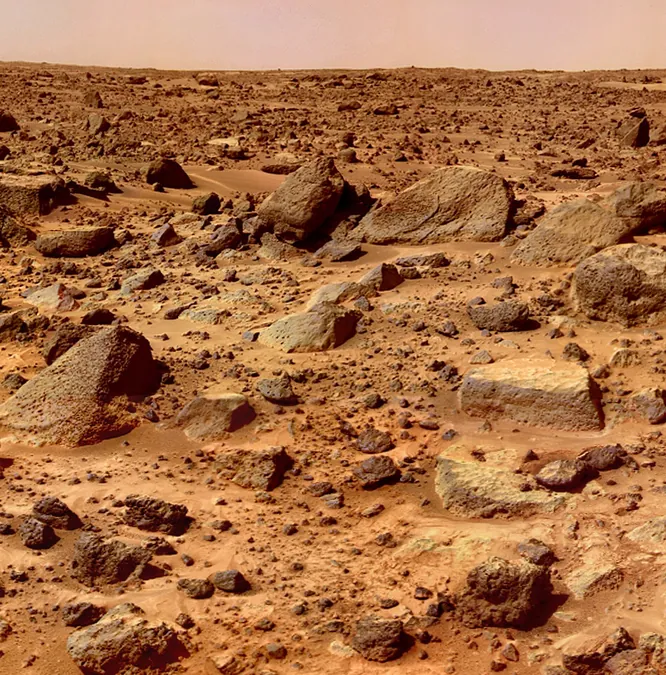
NASA and ESA Join Forces to Bring Martian Rocks to Earth: What to Expect from the Historic Samples
2025-04-07
Author: Benjamin
The Journey of Martian Samples
NASA's Perseverance rover, which touched down on Mars in February 2021, has been diligently collecting rock samples from the Jezero Crater, an area believed to be a former lakebed. This rover, equipped with advanced drilling capabilities, is gathering cylindrical cores of rock and placing them in sealed sample tubes for later retrieval.
As current-day conditions on Mars present too high a level of cosmic radiation for life to exist, the mission focuses on identifying potential fossilized life forms existing billions of years ago when the environment may have been more hospitable. The insights gleaned from these samples could be pivotal in answering fundamental questions about life's existence on other planets.
Delays in the Mission Timeline
However, the mission has encountered hurdles; an independent review board flagged MSR's budget and timeline as "unrealistic," potentially pushing back the launch past 2028. In response, NASA is soliciting alternative strategies to facilitate the mission. The agency is currently evaluating two proposals that involve a rover or a helicopter to gather the stored sample tubes and deliver them to a Mars ascent vehicle, which will be responsible for launching the samples into Martian orbit.
Upon successful launch, a capsule carrying these Martian samples will return to Earth, expected to re-enter our atmosphere and land in a secure government facility in Utah, USA, all projected to occur in the 2030s.
Analyzing the Samples: A High-Stakes Procedure
Once the samples reach Earth, scientists will analyze them in facilities equipped with advanced instruments that cannot be transported to Mars. The analysis will be done under rigorous conditions to ensure that any traces of ancient life are accurately identified. Multiple research teams will aim to replicate results independently to provide robust scientific confirmation.
The protocols for sample handling are dictated by the Committee on Space Research (Cospar), which deems MSR a "Category V Restricted Earth Return Mission." Until it's absolutely confirmed that the Martian rocks do not harbor any current life forms, they will be treated with utmost caution.
The analyzed samples will be kept in specially designed glove boxes filled with dry nitrogen to prevent chemical alterations and contamination from Earth microbes—an approach effectively used for lunar samples returned by the Apollo missions over 50 years ago.
Building the Sample Receiving Facility
A critical component of the MSR is the establishment of a Sample Receiving Facility (SRF), designed to conduct an initial analysis of the Martian rocks. This facility will operate under strict biocontainment protocols, utilizing technology and procedures akin to those found in labs that work with dangerous pathogens.
The financial implications of constructing the SRF are significant, potentially amounting to hundreds of millions of dollars. Officials are currently under pressure to streamline costs and define which analyses the SRF will incorporate. An expert panel has been convened to draft a report on these necessary analyses—anticipation for its release is mounting within the scientific community.
Meanwhile, new technologies for the MSR are being developed to facilitate both the safe containment of the Martian materials and thorough mineralogical analysis. This includes specialized secure chambers, known as multi-barrier isolator cabinets, which will streamline the process while minimizing contamination risks.
The Excitement and the Expectations
This mission, a pioneering step in astrobiology and planetary science, symbolizes human ambition and curiosity about our universe. As the program progresses, excitement for what these ancient Martian samples might reveal about the potential for past life grows. The scientific world eagerly anticipates transformative findings, setting the stage for future exploration that could one day take us to Mars itself.
Stay tuned, as the Mars Sample Return mission promises to unveil secrets of our neighboring planet that could forever alter our understanding of life in the cosmos!









 Brasil (PT)
Brasil (PT)
 Canada (EN)
Canada (EN)
 Chile (ES)
Chile (ES)
 Česko (CS)
Česko (CS)
 대한민국 (KO)
대한민국 (KO)
 España (ES)
España (ES)
 France (FR)
France (FR)
 Hong Kong (EN)
Hong Kong (EN)
 Italia (IT)
Italia (IT)
 日本 (JA)
日本 (JA)
 Magyarország (HU)
Magyarország (HU)
 Norge (NO)
Norge (NO)
 Polska (PL)
Polska (PL)
 Schweiz (DE)
Schweiz (DE)
 Singapore (EN)
Singapore (EN)
 Sverige (SV)
Sverige (SV)
 Suomi (FI)
Suomi (FI)
 Türkiye (TR)
Türkiye (TR)
 الإمارات العربية المتحدة (AR)
الإمارات العربية المتحدة (AR)